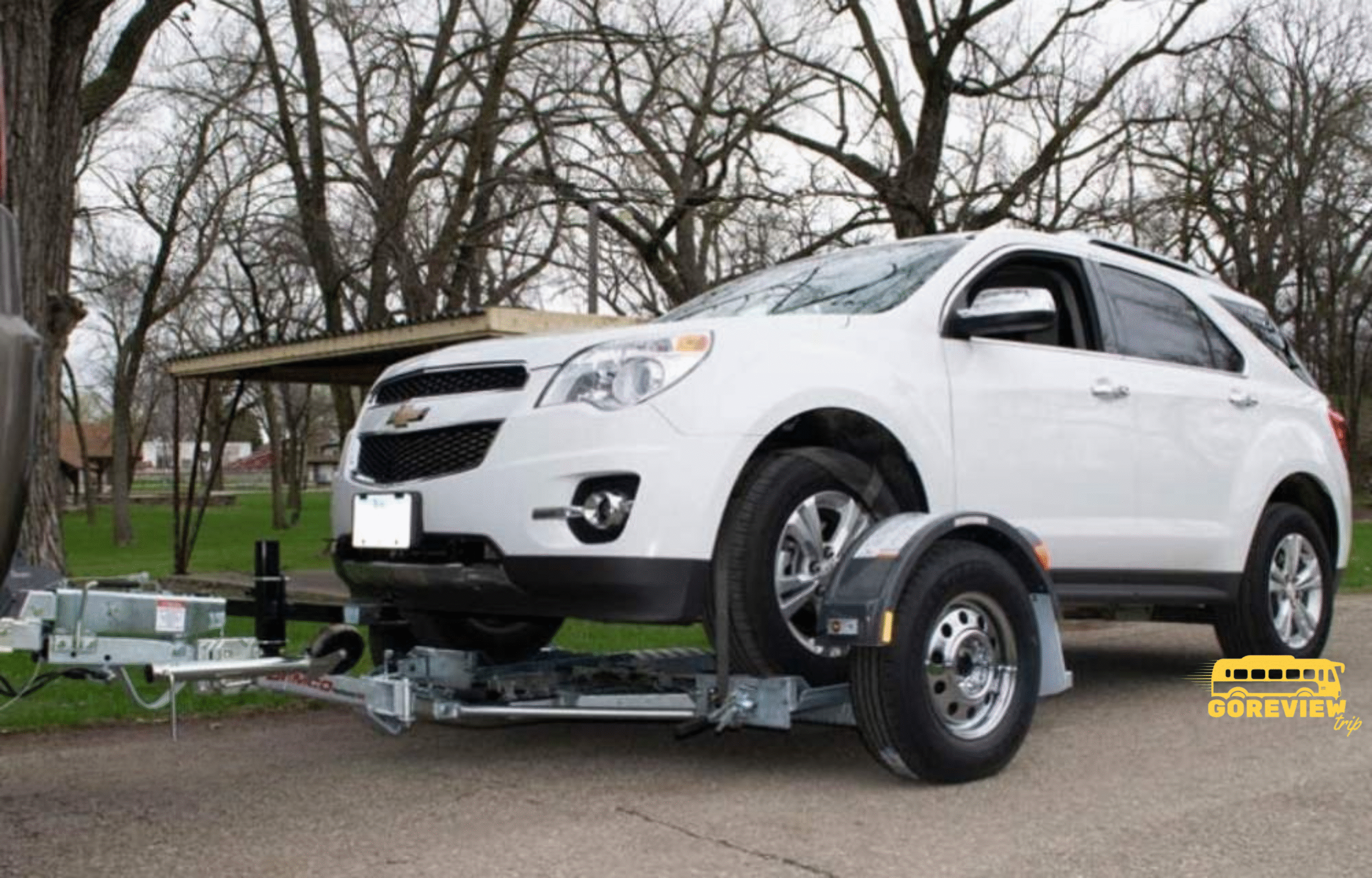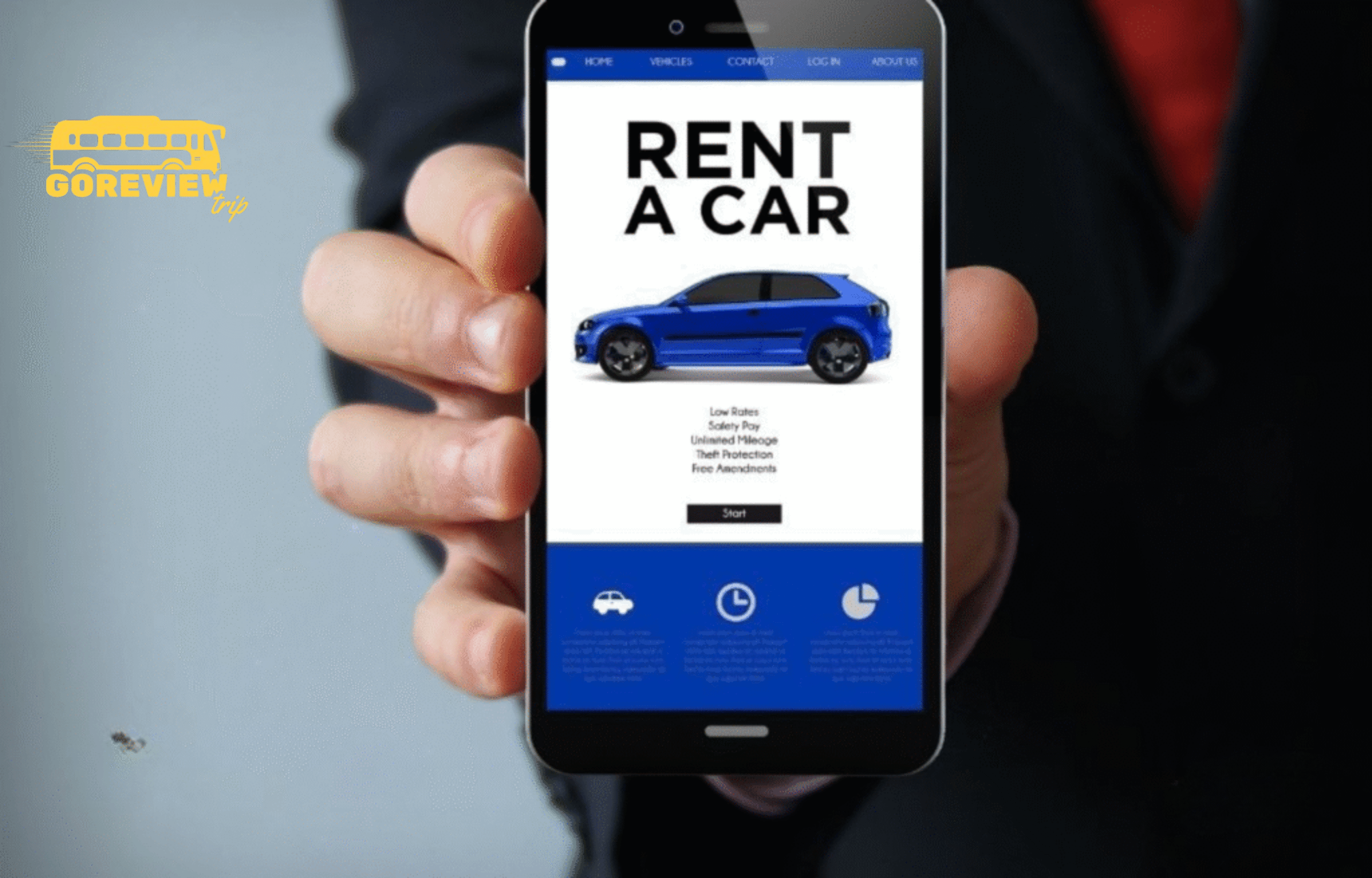Hey there, fellow adventurer and DIY mover! Lyra here. I’ve spent more hours on the open road with a moving truck and a trailing vehicle than I can count. I know the thrill of a cross-country move, the satisfaction of a budget well-kept, and the slight panic that sets in when you start looking at logistics. One of the biggest questions that always comes up? “How am I going to get my car there without breaking the bank?”
That’s where the trusty car dolly, or tow dolly, enters the picture. It’s the unsung hero of countless DIY moves, a simple yet effective tool for towing your vehicle behind a moving truck. But the million-dollar question—or rather, the fifty-dollar question—is: how much does it cost to rent a car dolly?
The short answer is that renting a car dolly typically costs between $40 and $70 per day for an in-town rental, and between $100 to $300+ for a one-way, long-distance move.
But as any seasoned traveler knows, the short answer is never the whole story. The final price on your receipt is a moving target, influenced by a dozen different factors. In this ultimate guide, we’re going to break down every single aspect of car dolly rental pricing. We’ll decode the quotes, uncover the hidden fees, compare the major players, and help you decide if a dolly is even the right choice for your journey.
Let’s hook up and get rolling.
Table of Contents
- 1 The Short Answer: A Quick Price Snapshot (2025 Estimates)
- 2 Decoding the Price Tag: Key Factors Influencing Your Car Dolly Rental Cost
- 3 Who Are the Major Players? A Head-to-Head Cost Comparison
- 4 Beware the Hidden Costs: What’s NOT Included in the Quote
- 5 Is a Car Dolly Your Best Bet? Car Dolly vs. Auto Transport Trailer
- 6 Before You Tow: Essential Requirements for Renting a Car Dolly
- 7 The Lyra Method: A Step-by-Step Guide to a Smooth Rental Process
- 8 Pro Tips for Saving Money on Your Car Dolly Rental
- 9 Final Thoughts: Is Renting a Car Dolly Worth It?
- 10 Frequently Asked Questions (FAQ)
The Short Answer: A Quick Price Snapshot (2025 Estimates)
Before we dive deep, let’s get you a ballpark figure. Prices vary, but here’s what you can generally expect from major national rental companies like U-Haul or Penske.
Crucial Caveat: These are base rates. They do not include taxes, insurance (damage waivers), or any other potential fees, which we will dissect in detail.
Decoding the Price Tag: Key Factors Influencing Your Car Dolly Rental Cost

Think of a rental quote as a recipe. The final flavor depends on the ingredients. Here are the primary factors that will determine your final cost.
1. One-Way vs. In-Town Rental: The Biggest Price Driver
This is the most significant factor.
- In-Town Rental: You pick up and drop off the dolly at the same location. This is priced on a daily rate (usually a 24-hour period). It’s cheaper on a per-day basis because the equipment stays within the local network.
- One-Way Rental: You pick up the dolly in City A and drop it off in City B. This is the standard for anyone moving. The rental company isn’t just charging you for the days you have it; they’re charging for the logistics of repositioning their equipment. The price is usually a flat rate for a set number of days and miles. U-Haul, for example, will quote you a price for, say, “5 days and 1,800 miles.”
2. Duration of Rental & Mileage
For one-way moves, the distance and the number of days you’re allotted are baked into the initial quote. If you need more days than they estimate for your trip, the price will increase. For in-town rentals, it’s simple: more days mean more money.
3. The Rental Company: U-Haul vs. Penske vs. Budget
Competition is your friend. The major players in the moving truck world are also the main suppliers of car dollies.
- U-Haul: The most ubiquitous and often the most affordable option. They have the largest network of locations, making one-way rentals incredibly convenient. Their online reservation system is straightforward.
- Penske: Known for newer, well-maintained trucks, Penske also offers reliable tow dollies. Their pricing is often competitive with U-Haul, but they may have fewer locations, especially in smaller towns.
- Budget Truck Rental: As the name implies, Budget aims for aggressive pricing. It’s always worth getting a quote from them to compare. Like Penske, their network is smaller than U-Haul’s.
Pro-Tip: Always get online quotes from all three. Prices can fluctuate wildly based on their inventory and your specific route.
4. Location, Location, Location (and Demand)
Where you rent from and where you’re going matters immensely. Renting a dolly to leave a high-demand city like San Francisco or New York might be cheaper than renting one to go there, as companies want their equipment moved out of saturated markets. This supply-and-demand dynamic is a powerful pricing force.
5. Time of Year: The Calendar’s Impact
Moving has a peak season. Prices will be highest from late spring through early fall (May to September). Weekends are more expensive than weekdays, and the end of the month is a pricing hotspot. If you have flexibility, an off-season, mid-week, mid-month move will almost always save you money.
6. Insurance & Damage Waivers
This is the most common “gotcha.” The base rental price does not include protection for the equipment. You will be offered a damage waiver, and it’s highly recommended you take it.
- SafeTow® (U-Haul): This is U-Haul’s waiver. It typically costs around $8-$15 per day or a flat rate for one-way moves. It covers most accidental damage to the dolly. Crucially, it does not cover your towed vehicle or liability.
- Penske & Budget Waivers: They offer similar programs. Expect to pay a comparable amount for their equipment protection plans.
Lyra’s Advice: Always purchase the damage waiver. A blown tire or a damaged fender on the dolly could cost you hundreds, if not thousands, to repair out-of-pocket. It’s a small price for significant peace of mind.
7. Taxes and Fees
Ah, the fine print. Your final bill will always be higher than your initial quote because of these add-ons. Expect to see:
- State and local sales taxes.
- Environmental fees (usually a few dollars).
- Sometimes, a vehicle licensing recovery fee.
These will typically add 10-15% to your base rental cost.
Who Are the Major Players? A Head-to-Head Cost Comparison

Let’s put the big three under the microscope. To give you a real-world example, I’ve run a sample quote for a one-way move from Chicago, IL to Austin, TX in mid-October 2025.
1. U-Haul Tow Dolly
- The Equipment: U-Haul’s tow dolly is their standard, recognizable orange model. It has a built-in ramp, vehicle security chains, and ratchet-style tire straps. It’s designed to tow most front-wheel-drive vehicles.
- Sample Quote (Chicago to Austin):
- Base Rental Rate: $215 (for 5 days)
- SafeTow® Damage Waiver: $40 (flat rate for the trip)
- Taxes: ~$20
- Estimated Total: ~$275
- Pros: Unbeatable number of locations, transparent online quoting, generally the most affordable base rate.
- Cons: Equipment can be older and show more wear and tear than competitors.
2. Penske Tow Dolly
- The Equipment: Penske’s tow dollies are similar in function to U-Haul’s, featuring articulating platforms and robust straps. They are often perceived as being in slightly better condition.
- Sample Quote (Chicago to Austin):
- Base Rental Rate: $239.99 (often bundled with a truck rental)
- Towing Protection Plan: ~$50
- Taxes: ~$23
- Estimated Total: ~$313
- Pros: High-quality, well-maintained equipment. Often offers AAA discounts.
- Cons: Fewer locations than U-Haul, can be slightly more expensive. Dolly rentals are often prioritized for customers also renting a Penske truck.
3. Budget Truck Rental Car Dolly
- The Equipment: Budget also provides a standard tow dolly. Their availability can be more limited, and sometimes you must call to confirm dolly availability even if the website shows it.
- Sample Quote (Chicago to Austin):
- Budget’s online system often requires you to book a truck to see dolly pricing. Based on past experience, their pricing is very competitive with U-Haul, sometimes even lower. Expect a similar range.
- Estimated Total: ~$260 – $300
- Pros: Can offer deep discounts and promotions, making them a potential dark horse for the lowest price.
- Cons: Limited availability and a less seamless online booking experience for tow-only rentals.
The Verdict: For sheer convenience and likely the best price, U-Haul is typically the go-to. However, if you are also renting a truck, it pays to get a bundled quote from Penske and Budget, as they may offer a package deal that comes out cheaper overall.
Beware the Hidden Costs: What’s NOT Included in the Quote
You have your quote, but what else might you need to spend money on?
- Hitch & Wiring Installation: Your towing vehicle must have a proper hitch system and lighting connection. If it doesn’t, this is a significant extra cost. Professional installation of a Class 2 or 3 hitch can run from $250 to $600.
- Hitch Ball: The rental company provides the dolly and the coupler that attaches to the hitch ball. However, they do not provide the ball mount or the hitch ball itself. You must have your own. A ball and mount can cost $30 – $60 at an auto parts store. U-Haul dollies typically require a 2″ hitch ball.
- Adapter for Lights: Your vehicle’s light connector might not match the dolly’s. The most common dolly connector is a “4-way flat” plug. If your car has a different system (like a 7-way round), you’ll need an adapter, which costs about $15 – $25.
- Padlocks: You’ll want one lock for the coupler to prevent someone from stealing the dolly when it’s unhitched, and potentially another for the ramp latch. Budget $10 – $20 for locks.
Is a Car Dolly Your Best Bet? Car Dolly vs. Auto Transport Trailer
Before you book that dolly, you need to ask a critical question: is it the right tool for the job? The primary alternative rental is a full Auto Transport Trailer (also called a car hauler).
The Bottom Line:
- Rent a Car Dolly if: You have a front-wheel-drive car, you’re on a tight budget, and your towing vehicle has a lower towing capacity.
- Rent an Auto Transport Trailer if: You have an all-wheel-drive or rear-wheel-drive car, you want to avoid any wear and tear on your vehicle, or you’re towing a car that doesn’t run at all.
Before You Tow: Essential Requirements for Renting a Car Dolly
You can’t just show up with a credit card. Rental companies have strict requirements to ensure safety.
- Towing Vehicle Requirements: The vehicle you use to tow the dolly must be heavy enough to handle it. A U-Haul C-Series pickup or a 10-foot truck can usually handle a dolly, but a small SUV might not. The rental company’s website will automatically check for compatibility when you book. They will need the year, make, and model of your tow vehicle.
- Hitch System Requirements: You must have a frame-mounted hitch (a hitch bolted directly to the vehicle’s frame). Bumper-mounted balls are strictly forbidden. The hitch will need to be Class 2 or higher, with a capacity of at least 3,500 lbs.
- Hitch Ball Size: The most common requirement is a 2-inch hitch ball, but always confirm with the rental company. Penske sometimes uses a 1 7/8″ ball. The ball must be rated for the load.
- Working Lights: You must have a working 4-way flat lighting connection to power the dolly’s brake lights and turn signals.
The Lyra Method: A Step-by-Step Guide to a Smooth Rental Process
Follow these steps to avoid headaches and surprises.
- Six Weeks Out: Research & Quotes. Get online quotes from U-Haul, Penske, and Budget for your exact dates and route. Play with the dates if you can—a Tuesday pickup might be much cheaper than a Friday.
- Four Weeks Out: Book It! Once you’ve found the best deal, reserve it online. Peak season inventory disappears fast. This is also the time to confirm your tow vehicle is properly equipped. If you need a hitch installed, schedule it now.
- The Week Before: Confirm & Prepare. Call the specific pickup location (not the national 1-800 number) to confirm they have your reservation and the dolly is on-site. Buy your hitch ball, adapter, and locks.
- Pickup Day: The Inspection. Before you hook up, inspect the dolly thoroughly. Check the tires for good tread and proper inflation. Check the lights and wiring for any frays. Test the ratchets and look at the security chains. Take pictures of any pre-existing damage.
- The Hook-Up: Have the rental agent demonstrate how to load your specific vehicle and secure the straps. Pay close attention. Ask questions. This is vital for your safety.
- The First Few Miles: After loading your car and driving off, pull over in a safe place after about 5-10 miles. Get out and re-check all the straps. They can loosen slightly as the car settles.
Pro Tips for Saving Money on Your Car Dolly Rental
As a DIY travel pro, I live for finding ways to cut costs. Here are my best tips:
- Be Flexible: The #1 way to save. Can you move in October instead of July? On a Wednesday instead of a Saturday? This alone can save you over $100.
- Book Early: Last-minute rentals, especially for one-way trips, command premium prices.
- Check for Discounts: Are you a AAA member? A veteran? A student? Penske is known for offering AAA discounts, and it never hurts to ask the others.
- Bundle and Save: If you’re also renting a moving truck, the best deal will almost always be bundling the truck and dolly from the same company. They use the dolly as an incentive.
- Do a “Reverse” Search: Out of curiosity, check the price of your move in the opposite direction. If it’s drastically cheaper, it tells you about the equipment demand on your route. You can’t use this info directly, but it helps you understand the price.
Final Thoughts: Is Renting a Car Dolly Worth It?
So, after all this, what’s the final cost? For a typical long-distance DIY move, you should budget between $250 and $450 for the total cost of renting a car dolly, including the rental itself, insurance, and taxes.
Renting a car dolly is an absolutely fantastic way to save a significant amount of money compared to professional car shipping services, which can easily cost $1,000 to $2,000 or more. It gives you the control and flexibility to manage your own timeline.
The cost is more than just a dollar figure; it’s an investment in a tool that makes a complicated move possible. By understanding the factors that influence the price, comparing your options, and planning ahead, you can secure that tool for the best possible rate.
Drive safe, take your time, and enjoy the journey. You’ve got this.
Frequently Asked Questions (FAQ)
Q: Can I tow an All-Wheel Drive (AWD) or 4×4 vehicle on a car dolly? A: Generally, no. Towing an AWD or 4×4 vehicle with two wheels on the ground can cause severe damage to the vehicle’s transmission and drivetrain. You must rent a full Auto Transport Trailer for these vehicles.
Q: Can I tow a Rear-Wheel Drive (RWD) vehicle on a car dolly? A: It’s possible but not recommended for novices. To do it safely, you would need to disconnect the driveshaft to prevent transmission damage. This is a mechanical job that most people are not equipped to do. For RWD cars, an Auto Transport Trailer is the much safer and easier option.
Q: Do I need special insurance to rent a car dolly? A: The damage waiver offered by the rental company (like U-Haul’s SafeTow®) only covers the dolly itself. Your personal auto insurance policy should cover your towed vehicle, but you must call your insurance agent to confirm coverage for a vehicle being towed this way.
Q: How fast can I drive while towing a car dolly? A: Most rental companies recommend a maximum speed of 55 mph (88 km/h). Towing changes your vehicle’s handling and braking distance dramatically. Drive slower than you normally would, leave extra space, and avoid sudden maneuvers.
Q: Can I back up with a car dolly? A: It is extremely difficult and not recommended. The dolly pivots independently from the tow vehicle, making it nearly impossible to control in reverse. Plan your route and your stops to avoid any situation that would require you to back up.






